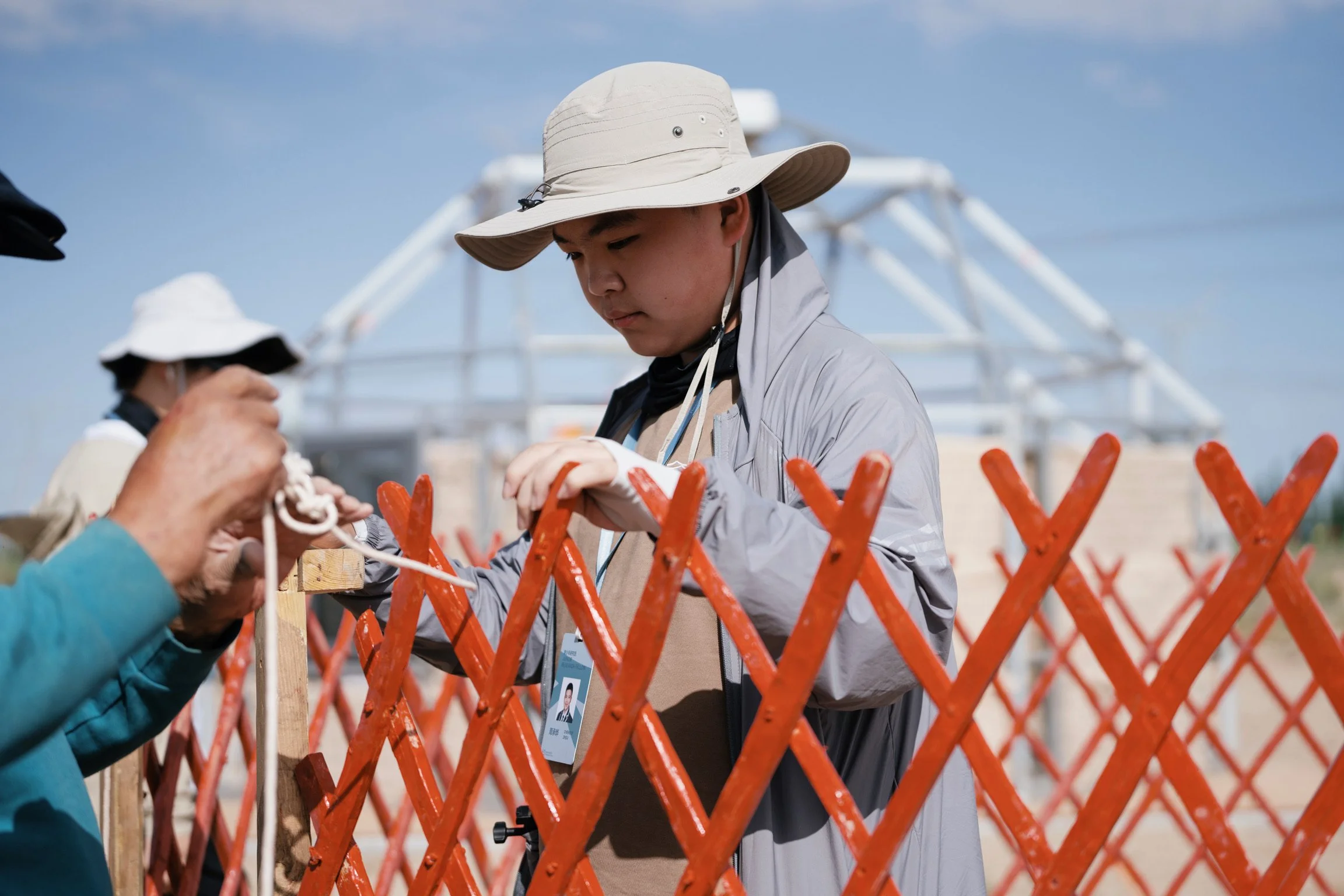Building Heritage: Exploring the Traditional Mongolian Yurt at ResilienSEED Research Program
One of the most memorable moments at our ResilienSEED program was when the entire team came together to construct a traditional Mongolian yurt alongside our newly built solar-powered yurt prototype. With the guidance of experienced Mongolian herders, participants assembled the structure in just one hour, creating a space large enough to accommodate ten people. This collaborative effort not only added an authentic cultural element to our camp but also deepened everyone’s appreciation for vernacular architecture and its ecological wisdom.
Key Features of a Traditional Yurt
The Mongolian yurt, or ger, is an architectural marvel designed for the harsh climates of the steppe. Its circular structure allows it to withstand strong winds and temperature extremes, while its portability suits the nomadic lifestyle of herding families. Traditionally, the yurt consists of:
• A Wooden Lattice Frame: Lightweight and collapsible, providing both flexibility and strength.
• Felt Insulation: Made from compressed sheep’s wool, offering excellent thermal performance for cold winters and hot summers.
• A Crown Opening (Toono): Serves as both a skylight and ventilation system, allowing smoke from the hearth to escape and sunlight to enter.
• Canvas or Fabric Covering: Protects against rain and wind while maintaining breathability.
These features make the yurt a perfect example of sustainable design born from necessity, balancing environmental adaptability, cultural traditions, and material efficiency.
Learning Through Building and Dialogue
This hands-on experience was more than just construction; it was a cultural exchange and an opportunity to reflect on how traditional knowledge can inform modern sustainability. After the yurt was completed, participants engaged in one-on-one research interviews with project leaders to deepen their understanding of architectural and ecological themes. Many expressed a strong interest in continuing to explore ecology-related topics, demonstrating curiosity, creativity, and a commitment to long-term inquiry.
Building a traditional yurt alongside a solar-powered prototype created a powerful juxtaposition—heritage and innovation coexisting in the same landscape. It reminded us that the future of sustainable architecture lies in learning from the past while integrating new technologies to address contemporary challenges.




